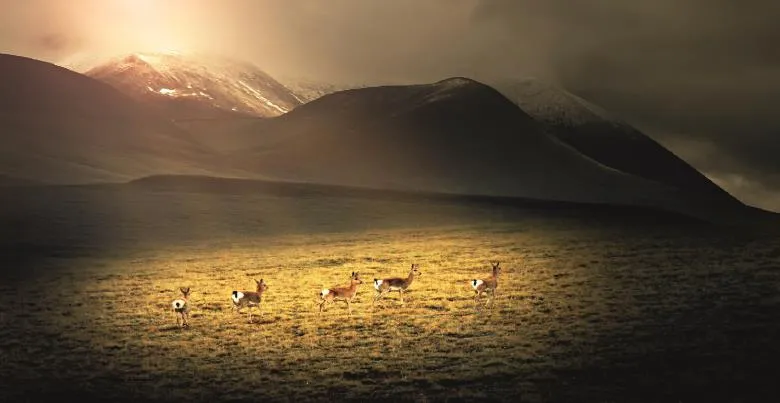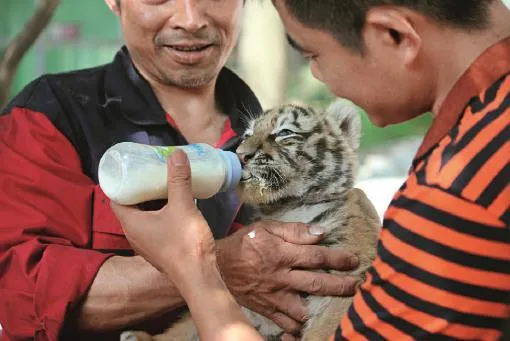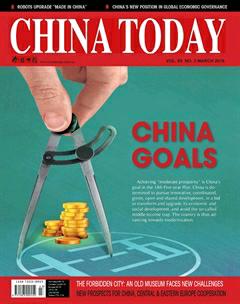International Cooperation on Biodiversity
2016-09-14BystaffreporterCRISTOPHETRONTIN
By staff reporter CRISTOPHE TRONTIN
International Cooperation on Biodiversity
The Wildlife Conservation Society, an international conservation NGO, is helping China to enforce laws protecting endangered species, thus playing its part in safeguarding world biodiversity.

By staff reporter CRISTOPHE TRONTIN
BEFORE meeting Rachel Hemingway I already knew that she far prefers China’s far West over the sterile modernity of Beijing. An avid climber and mountain biker, Rachel is never happier than when rambling through wild, untrodden landscapes.
Rachel works in Beijing for the Wildlife Conservation Society (WCS), an international NGO whose mission is to support the conservation of endangered species.
The WCS was established in 1895 in the United States. Back then, its most urgent mission was to save the North American buffalo which, although emblematic of native American culture, was on the verge of extinction. A few decades after launching this campaign, numbers of the magnificent beast grew sufficiently for it to be removed from the red list of endangered species. The WCS has since conducted more than 500 conservation projects, under the four broad categories of climate change, natural resource exploitation, links between wildlife and human health, and sustainable development of human habitats.
Society has since gone global. The greater mobility of population and goods as a result of economic globalization, and resultant legal shortfalls in protecting animal habitats from human encroachments, has made conservation problems a global issue. The challenge of our time is to formulate and promote international laws that prevent the hunting, poaching, export, and exploitation of rare species. The main difficulty is enforcement of such legislation at the local level. But there have been encouraging results in Africa. Thanks to multilateral cooperation, the population of elephants, white rhinos, antelopes and other endangered fauna has stabilized, and in some cases even started to grow. That of the African elephant is now around 500,000. The WCS established its first China branch in 1996. The China team has been hiring workers ever since, and now has a workforce of 23.
The Role of China
With a population that becomes steadily more well off, China is a crucial element in the international trafficking equation. Chinese artistic, culinary and medical traditions have made it the largest importer of goods like ivory, sharks fin, and various other parts, organs, powders and extracts of rare animals and plants. It is also fashionable in nouveau riche circles to procure and make a display of rare and exotic birds, turtles, and fish, or make stuffed hunting trophies part of the home interior décor.
Of course, Chinese law, which is bound by international treaties, prohibits commerce in internationally banned products – for example items mentioned in the United Nations Environment Programme (UNEP), the Convention on International Trade inEndangered Species (CITES), and the International Union for Conservation of Nature (IUCN).
The ivory trade, in particular, is strictly regulated. Since 1989, African elephants have been protected under the CITES convention signed by 175 countries. This has helped to curb poaching in Africa. According to this treaty, each piece of ivory must be registered and issued with a passport that includes its photograph.
To supply ivory sculptors with the raw materials they need without encouraging trafficking, there have been periodical decisions at the international level to release certain amounts of ivory from stocks of seized goods. This is a controversial measure, because it supports the ivory carving industry. Research has also shown that such issuances, rather than flooding the market, instead trigger a surge in demand, so expanding it. China is one of the key culprits in this regard, because it possesses the largest number of ivory sculptors and the largest market for ivory goods. Enforcing international regulations in China, therefore, is crucial to preventing the illegal hunting of African elephants that puts the species at risk.
A significant step in this respect was China’s pledge last May to crack down on its domestic ivory trade, backed up last September 25 by the agreement between Chinese President Xi Jinping and U.S. President Barack Obama to enact“nearly complete bans” on the import and export of ivory.
This was the first time that the presidents of China and the United States have made a specific, shared commitment to protect wildlife, the Humane Society of the United States said in a statement.
Ambitious Programs
The WCS has set up a series of conservation initiatives for endangered species in China, the most emblematic the Amur tiger, the wild yak, the Chinese alligator, the Tibetan antelope, the saiga antelope, and the pangolin. Various campaigns, including awarenessraising, anti-poaching, and the fencing off of natural habitats, to help these populations stabilize and grow are being discussed and implemented. Often, the combination of adverse factors calls for complex approaches. For example, saiga antelopes are hunted for their horns – a traditional Chinese medicine ingredient. But their natural habitats are also shrinking due to extensive farming, and living in proximity to farm animals makes them prey to foot-and-mouth and other epidemics.
Animal and animal product trafficking is a globalized trade. All customs checkpoints in China do their utmost to intercept protected species and prevent them from reaching the Chinese market. Police and customs routinely discover and seize such products and try to dismantle the networks behind them. But, as with any illegal trade, law enforcement bodies must tackle well-organized and inventive gang networks.
One of the problems the WCS has identified in China, according to Rachel, is the difficulty customs officials find in distinguishing prohibited from legitimate products. They are also often taken in by traffickers’ forged documentation. In response, the WCS has organized a series of training seminars for more than 1,500 customs officials, forestry agents, and fishery controllers. The identification rate of prohibited species and products has since soared 200 percent. However a follow-up study conducted six months later showed that recently acquired biological and botanical knowledge had rapidly dissipated. Consequently agents could, on average, act on only 41 percent of the data they possessed.

A Siberian tiger cub enjoys a milk break at a zoo in Hubei Province.
Innovation Serves the Law
The WCS studied this problem and came up with a new solution. They developed the free “Guardian” app, downloadable on tablets and smartphones, which gives customs officials detailed species identification guidelines. Another advantage of this approach is that it enables immediate and permanent updating of information. Therefore, agents have access to information on every newly protected species and the laws applicable. The Guardian app currently describes about 500 species or animal parts that are subject to trafficking in China. Its data base enables users to download information through which to identify the products and check the relevant laws and regulations, thus improving law enforcement efficiency.
The objective of the WCS is to help the Chinese public better understand these problems, and act to safeguard the country’s biodiversity. Did you know that 10 percent of indigenous fauna on China’s mainland, for example the giant panda, are found nowhere else on the planet?C
